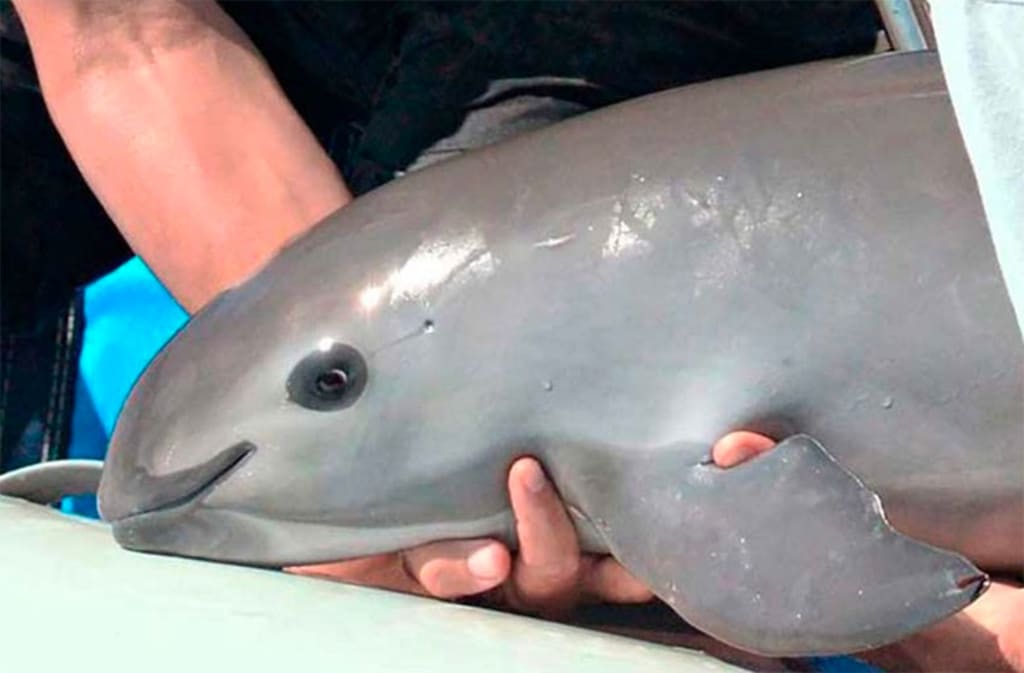Vanishing Gems of the Sea: 25 Fascinating Facts About the Endangered Vaquita
Endangered Vaquita

Here are some facts about the vaquita:
Size and Appearance:
The vaquita is the smallest and most endangered cetacean species. They have a distinctive appearance with a dark gray body, lighter gray belly, and dark rings around their eyes and lips. They reach an average length of around 4.5 to 5 feet (1.4 to 1.5 meters) and weigh about 120 pounds (55 kilograms).
Habitat:
Vaquitas are found exclusively in the northern Gulf of California, also known as the Sea of Cortez, in Mexico. They inhabit shallow, coastal areas and are known to prefer warm, murky waters.
Population Decline:
The vaquita population has declined drastically in recent years. It is estimated that in 1997, there were about 600 individuals, but by 2019, the population had dwindled to less than 10 individuals, making it the most endangered marine mammal.
Threats:
The primary threat to vaquitas is accidental entanglement in fishing nets, particularly gillnets used for catching shrimp and illegal fishing for a critically endangered fish called the totoaba. The totoaba swim bladder is highly sought after in Asian markets, leading to the use of illegal gillnets that inadvertently trap and drown vaquitas.
Conservation Efforts:
Conservation organizations and the Mexican government have been working together to protect the vaquita and its habitat. Conservation measures include implementing a gillnet ban in vaquita habitats, increasing surveillance and enforcement efforts, and promoting alternative fishing methods.
Conservation Successes:
Efforts to protect the vaquita faced significant challenges, but there have been some positive developments. In 2019, a captive breeding program was initiated with the goal of breeding vaquitas in a protected sanctuary. However, the vaquita's low numbers and other challenges make conservation efforts extremely difficult.
Critical Status:
The vaquita is listed as critically endangered on the International Union for Conservation of Nature (IUCN) Red List of Threatened Species. It is also protected under the U.S. Endangered Species Act and the Convention on International Trade in Endangered Species of Wild Fauna and Flora (CITES).
Here are 25 more facts about the vaquita
- The scientific name of the vaquita is Phocoena sinus.
- Vaquitas are part of the porpoise family and are closely related to dolphins and whales.
- They have a lifespan of around 20 years.
- Vaquitas have a small, rounded dorsal fin, which is proportionally larger compared to other porpoises.
- The species was first described in 1958 by Mexican scientists.
- Vaquitas are primarily solitary animals, although they can sometimes be seen in small groups.
- They are known for their shy and elusive behavior, making them difficult to study and observe.
- Vaquitas have excellent hearing abilities and use echolocation to navigate and locate prey.
- Their diet consists mainly of fish, squid, and crustaceans.
- Female vaquitas give birth to a single calf after a gestation period of around 10 to 11 months.
- Calves are born in the spring and summer months.
- The vaquita's unique facial markings, including dark rings around the eyes and lips, help distinguish it from other porpoise species.
- Vaquitas can swim at speeds of up to 6-7 miles per hour (10-11 kilometers per hour).
- They are not known for their acrobatic behavior like some dolphin species.
- Vaquitas have a layer of blubber that helps them stay warm in cold waters.
- The vaquita's population decline is considered one of the most rapid and drastic declines of any marine mammal.
- Conservation organizations have conducted acoustic surveys to estimate the population size and distribution of vaquitas.
- The vaquita is a flagship species for marine conservation in the Gulf of California.
- Efforts have been made to establish a vaquita refuge area in their habitat to protect them from gillnets.
- The vaquita has become an iconic symbol of the conservation challenges faced by marine species.
- The vaquita's decline is a result of unsustainable fishing practices and habitat degradation.
- Other threats to vaquitas include pollution, climate change, and noise disturbance from human activities.
- Vaquitas are a protected species under the Mexican law, and penalties for their capture or harm are severe.
- The vaquita population is monitored closely, and acoustic monitoring devices are used to detect their presence in the wild.
- International collaboration is essential for the conservation of vaquitas, with governments, scientists, and conservation organizations working together to save the species.
About the Creator
Ajith Kumar
Good story teller about Sci-Fi, Adventure, thriller
Good in Pet Fishes and Pet Birds detailes
Good in General Facts






Comments
There are no comments for this story
Be the first to respond and start the conversation.